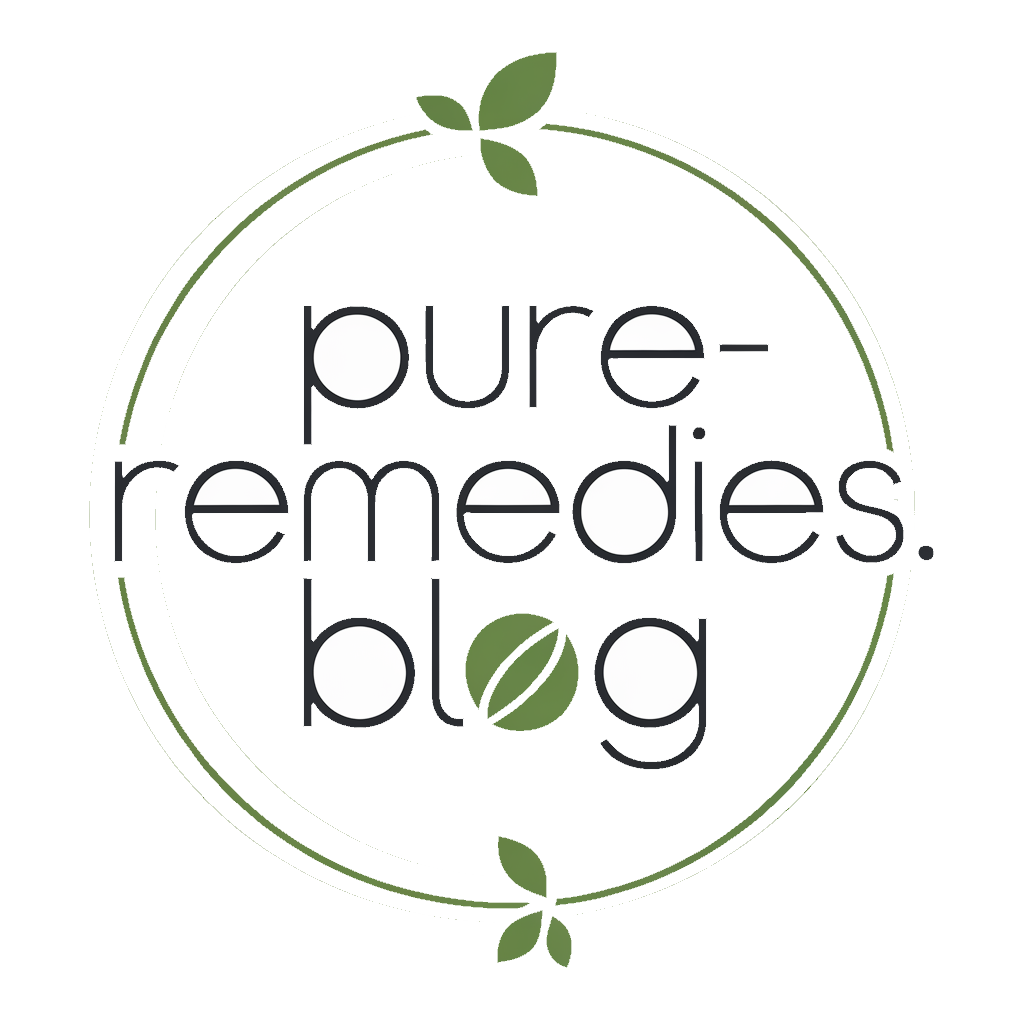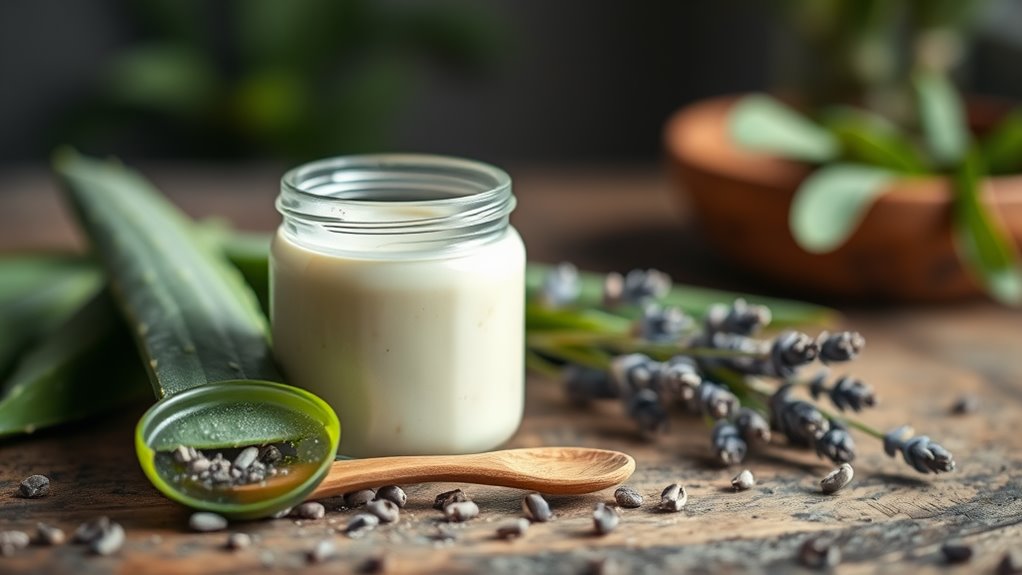Get Rid of Eczema With This Soothing DIY Cream
You might think managing eczema requires expensive treatments or prescriptions, but a simple DIY cream can offer effective relief. This natural solution harnesses the power of nourishing ingredients to soothe itchy, inflamed skin. By understanding how to create and apply this cream, you can take control of your skin health. Let’s explore the essential components and the straightforward process to craft a remedy tailored to your needs.
Key Takeaways
- Create a soothing DIY cream using natural ingredients like Shea Butter, Coconut Oil, and Aloe Vera to alleviate eczema symptoms.
- Customize the cream to suit your skin’s sensitivities and avoid irritants found in commercial products.
- Follow safe preparation steps, including sanitizing tools and using a double boiler to melt and combine ingredients.
- Apply the cream on clean, dry skin using gentle circular motions for optimal absorption and relief from itching and inflammation.
- Incorporate stress-reduction techniques and anti-inflammatory foods into your routine to further manage eczema flare-ups.
Understanding Eczema and Its Symptoms
Eczema, also known as atopic dermatitis, is a chronic skin condition that affects individuals of all ages. You may experience symptoms like itchy, inflamed, and dry skin. Understanding eczema triggers is crucial; common triggers include allergens, irritants, and environmental factors. Your genetic factors also play a significant role in your susceptibility to eczema, as a family history of the condition can increase your risk. Identifying and managing these triggers can help you minimize flare-ups and improve your skin’s overall health. Additionally, using a natural eczema relief cream can provide soothing benefits and help alleviate symptoms.
Benefits of Using a DIY Cream
Managing eczema can often feel overwhelming, but creating a DIY cream offers a personalized approach to soothing your skin.
One significant benefit is cost savings; making your cream at home can be more economical than purchasing commercial products.
Additionally, DIY creams provide customization options, allowing you to tailor the ingredients to your specific needs and sensitivities.
You can experiment with various natural components to discover what works best for your skin.
This level of control not only enhances the effectiveness of your treatment but also helps you avoid potential irritants found in store-bought alternatives.
Furthermore, using natural ingredients can promote healing and reduce inflammation, making your DIY cream even more beneficial for eczema sufferers.
Embrace the power of DIY for optimal skin health.
Key Ingredients for Your Eczema Cream
Creating an effective eczema cream requires careful selection of key ingredients that can soothe and nourish your skin. Consider using the following components to enhance your cream’s efficacy:
| Key Ingredient | Ingredient Alternatives |
|---|---|
| Shea Butter | Cocoa Butter |
| Coconut Oil | Jojoba Oil |
| Aloe Vera Gel | Calendula Oil |
Sourcing methods play a crucial role in ingredient quality. Opt for organic and ethically sourced materials when possible. This ensures you’re not only benefiting your skin but also supporting sustainable practices. Prioritize these ingredients to create a cream that effectively targets eczema symptoms. Additionally, incorporating coconut oil’s anti-inflammatory properties can significantly enhance the effectiveness of your cream in providing relief.
Step-by-Step Guide to Making the Cream
Making your own eczema cream can be a straightforward process that empowers you to take control of your skin health.
First, gather the equipment needed: a double boiler, mixing bowl, and storage container.
Before you start, ensure you follow safety precautions; wash your hands and sanitize all tools to prevent contamination.
Melt your chosen oils and butters in the double boiler, stirring until combined.
Remove from heat and let it cool slightly before adding any essential oils.
Pour the mixture into the storage container and allow it to set. Including natural ingredients known for their soothing properties can enhance the effectiveness of your cream.
Your soothing cream is now ready for use on affected areas.
How to Apply the Cream Effectively
Before applying the cream, cleanse the affected area thoroughly to remove any irritants.
Use gentle circular motions when applying the cream to ensure even distribution and better absorption.
This technique helps maximize the cream’s effectiveness in alleviating eczema symptoms. Additionally, incorporating natural ingredients known for their soothing properties can enhance the cream’s efficacy.
Cleanse Affected Area First
To effectively apply your DIY cream for eczema, it’s crucial to start by cleansing the affected area thoroughly. Use gentle cleansers that won’t irritate your skin further; look for products specifically designed for sensitive skin. Avoid harsh soaps or scrubs that can exacerbate inflammation.
If you prefer hygiene alternatives, consider using a soft, damp cloth to gently pat the area clean.
This prepares your skin to absorb the cream more effectively, enhancing its soothing properties.
Ensure the area is completely dry before proceeding, as moisture can dilute the cream’s effectiveness, reducing its potential benefits for your eczema.
Use Gentle Circular Motions
Once the affected area is clean and dry, it’s time to apply the cream.
Use gentle circular motions, resembling dance movements, to ensure even distribution.
Start at the center of the affected area and work your way outward, employing stirring techniques to blend the cream into the skin.
This method helps enhance absorption and minimizes irritation.
Apply light pressure, allowing your fingertips to glide smoothly over the skin, which encourages blood flow and promotes healing.
Avoid vigorous rubbing, as this can exacerbate irritation.
Consistency in your application technique will aid in managing eczema effectively.
Tips for Maintaining Healthy Skin With Eczema
How can you effectively maintain healthy skin when living with eczema?
First, implement stress reduction techniques, as stress can exacerbate flare-ups. Consider practices like mindfulness, yoga, or deep breathing exercises. Next, follow dietary advice by incorporating anti-inflammatory foods such as fatty fish, leafy greens, and nuts while avoiding processed foods and allergens that trigger your symptoms. Keep your skin moisturized with suitable creams and avoid irritants like harsh soaps. Regularly consult with a dermatologist to adjust your treatment plan as needed. Additionally, using natural recipes for DIY skincare can help create soothing creams that nourish your skin.


